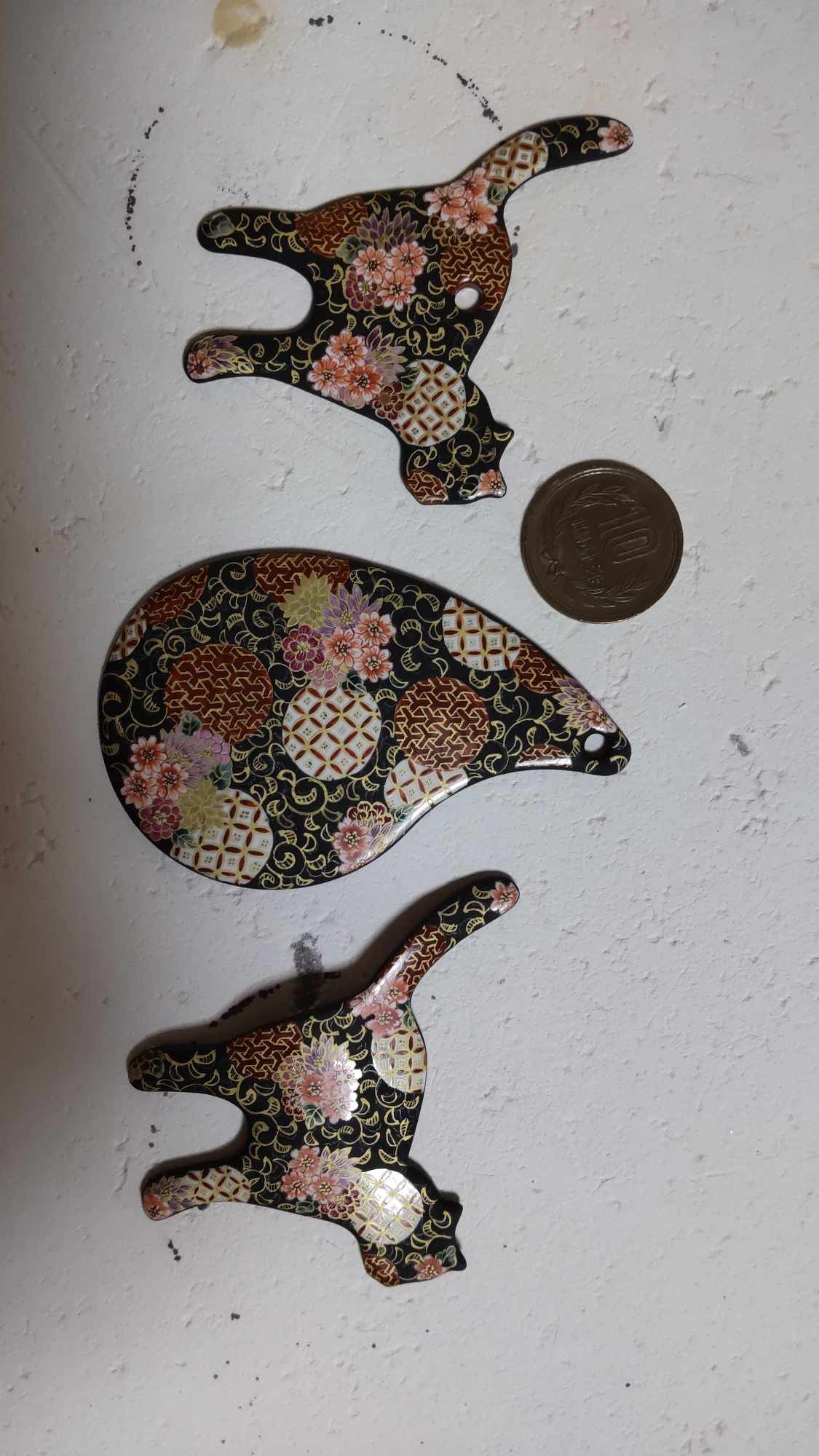
Last month at a porcelain art exhibition in Italy, my French friend Bea gave me some blank porcelain pendant tops for free. Usually, she sells them at shows but in that show, she seemed to be down because of her best friend's air plane crash. I tried to encourage her, but it didn't work.
After I returned to Japan from Italy, I started painting on them; one for Bea, one for my Welsh friend, Lynn and one for my best female American friend, Gay, who is also an artist. Since Gay and Lynn love cats, I painted them in a very Japanese style.
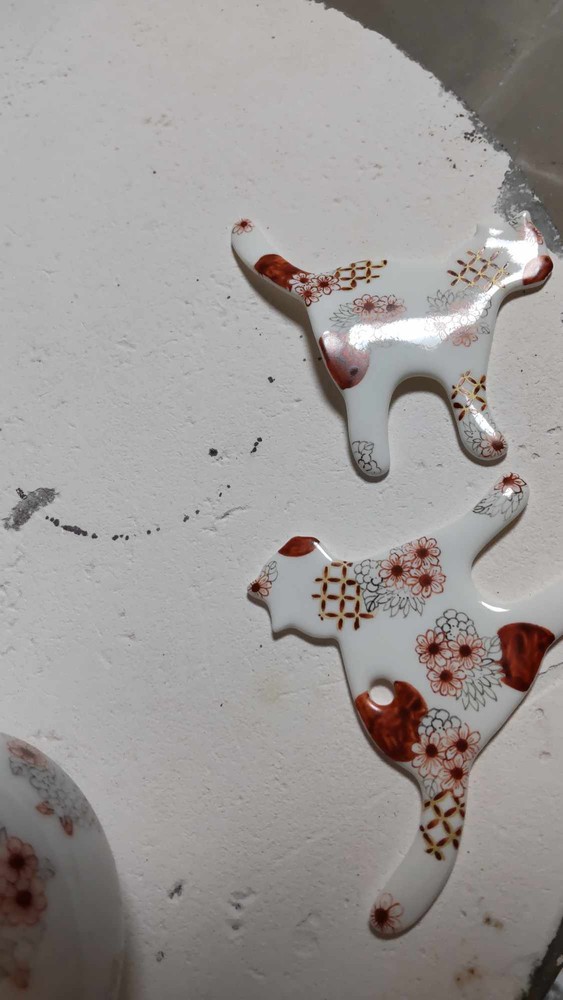
The first picture shows the initial stage. I drew some flowers and Japanese traditional patterns.
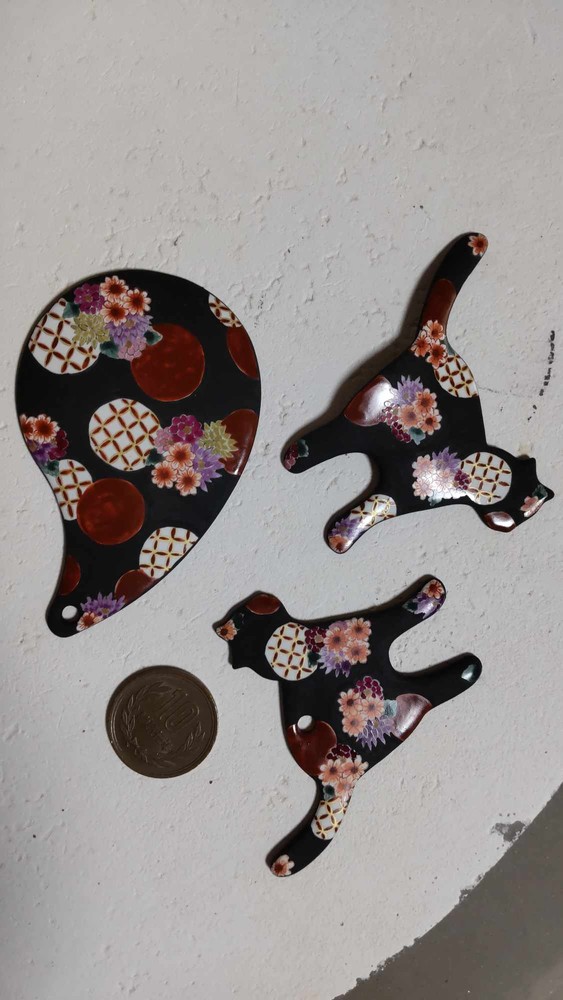
After firing them in my electric kiln, I added more colors on the flowers, Japanese patterns and covered the white part with color black. It was getting closer to my image and fired them again. The second picture shows this stage.
For the final touches, I added an arabesque pattern with gold to tie everything together and fired them once more.
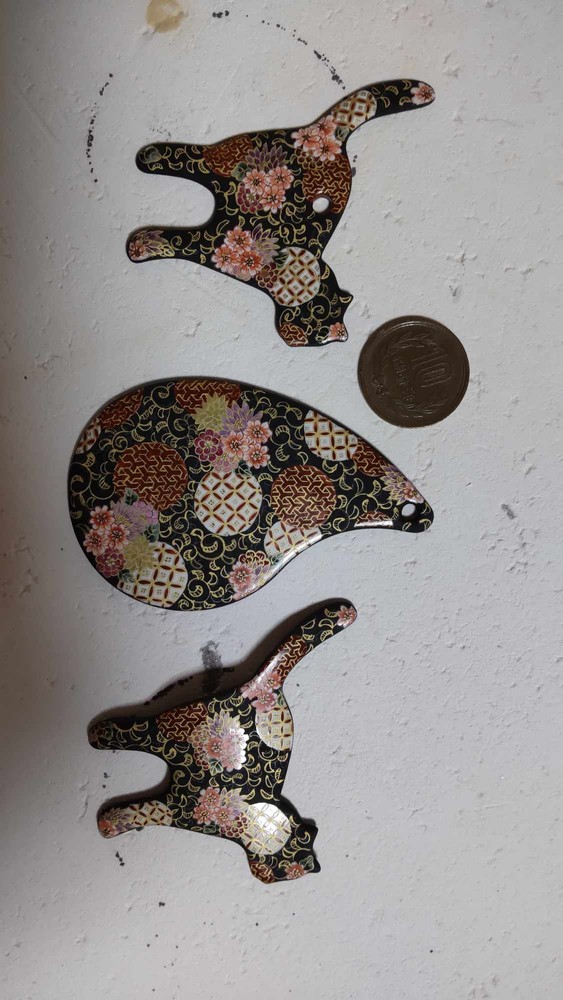
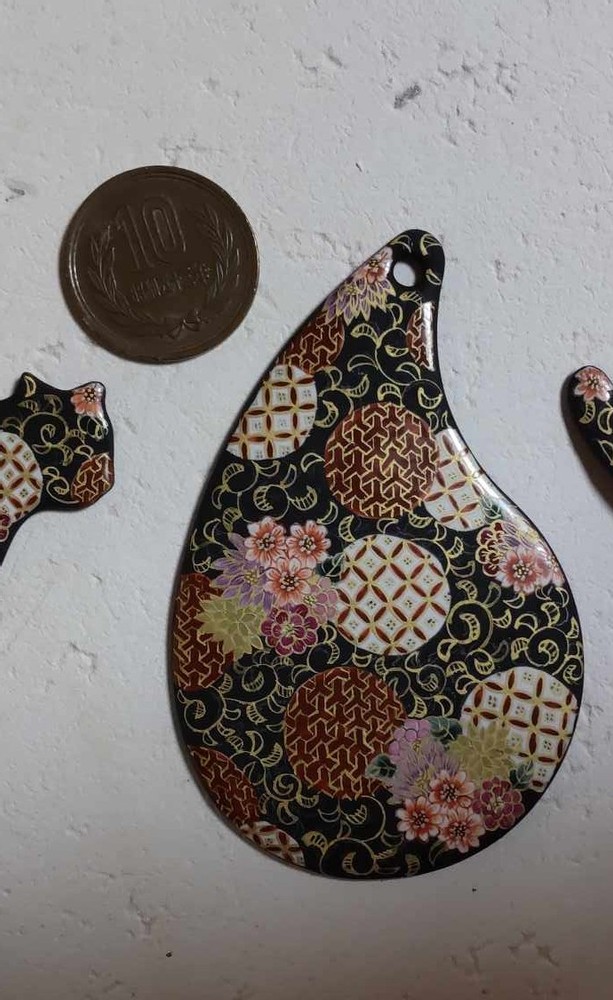
The last two pictures show the finished pieces. I truly hope my hand-painted pendant top will lift Bea's spirits, and that Gay and Lynn also will love theirs.
Since painting the pendant tops was so much fun, I'd love to order more in different shapes from Bea!
(4712)
From what you write, Yumi, I am beginning to imagine that a woman porcelain painter in 1630, in Japan, made subtle designs that included discreet inscriptions expressing her personal wishes for the protagonist of my story who could not do otherwise because of social prejudices. A close example of this idea would be the art of Arita and Imari porcelain . Is it possible or is it nonsense?
I have also read that some potters in Kyushu - where there was a secret Christian influence - went so far as to include discreet Christian symbols, such as small crosses hidden in the details of scenes or in the signature. How interesting!
Beautiful designs, yumiyumayume! Bravo!
These are stunning!!! Wow! Your friends are going to absolutely love them!
@druida You are rightl! My style is called Kyo-Satsuma because people in Kyoto created their own style based on Kyusyu( Satsuma). I usually paint a little bit more modern looking pieces, so I call mine Neo-Kyo-Satuma, lol. I've never seen the crosses patterns but it sounds very interesting! Thank you for sharing!
@T-Newfields Tim-san, thank you as always for taking a look at my post! Thank you for the comment as well!!
@VengefulTurtle Thank you so much for correcting my post and the comment! I'm happy to hear that!!
@yumiyumayume It’s always a pleasure (:
@VengefulTurtle Thank you again!